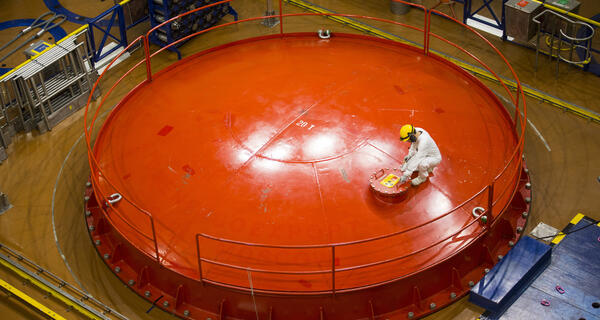The safety of the Loviisa nuclear power plant is based on the very high reliability of equipment and functions. Multiple parallel functions that back up each other and structural barriers are part of the safety systems designed to manage any situation. Additionally, the nuclear power plant's systematic annual outages and modernisation projects ensure that the equipment is always in compliance with current standards.
Personnel are in a key role
The know-how of the Loviisa power plant personnel is maintained through continuous training. The staff responsible for operating the nuclear power plant must have thorough knowledge of the plant and profound professional skills. This is ensured through 3–4-year-long training where the ordinary technical education is supplemented with training focusing on the Loviisa power plant's special features and safety aspects. Most of the basic and supplementary training is carried out with the Loviisa power plant's training simulator. It is used to simulate the operations of the Loviisa nuclear power plant units, and disruption situations in a surrounding that corresponds to real conditions.
The shift supervisors and operators are required to have a special, nuclear power plant unit-specific licence, a so-called "operating permit", issued by the Radiation and Nuclear Safety Authority of Finland. Professional skills are retained through continuous training and regularly renewable licence exams.
The reactor is protected with several barriers
At the Loviisa power plant, several successive structural barriers prevent radioactive materials from the fuel from being released into the environment. The innermost barrier consists of the metal cladding that protects the fuel rods. The next barrier is the reactor pressure vessel. The reactor circuit is surrounded by a gas-tight steel containment, which is the third barrier. The entire primary circuit, i.e. the part of the power plant that holds the reactor core, is in a separate concrete containment building.
The reactor is equipped not only with cooling systems that are part of the process, but also with several parallel emergency cooling systems. The supply of electricity to these systems is ensured with several redundant and independent systems. This is to prevent fuel damage in the highly unlikely event of an accident.
Loviisa power plant's Technical Specifications set the specific plant parameters on how to run the power plant safely and reliably. Large safety margins are set so that there is enough time to respond to any abnormal levels of radiation in all situations.
Safety systems go through periodic testings and inspections in order to ensure that operational limits and conditions and other permits and regulations are met accordingly at all times and possible problems are recognized as early and as reliably as possible. During the annual outages the safety systems go through systematic and thorough maintenance, testing and inspection programs.
Incidents at the power plant are investigated, evaluated and reported according to Finnish legislation and the international standards (IAEA, WANO). The power plant's technical operations and organization are subject to strict internal quality assurance and inspections by international peer reviews and the authorities.
Improving safety means continuous improvement in all processes. Incidents and discrepancies from the Technical Specifications are reported to the National Radiation and Nuclear Safety Authority STUK. The report on regulatory oversight can be found online on STUK's website.
